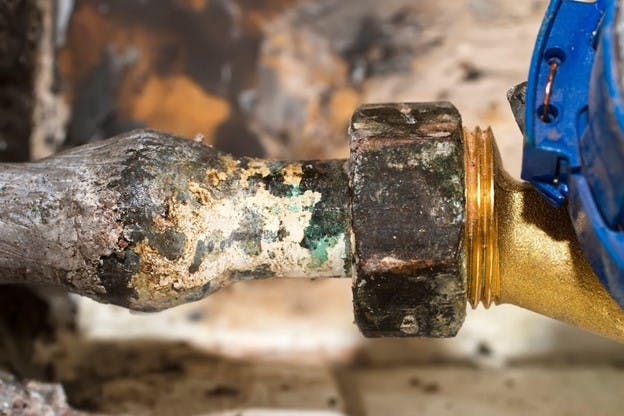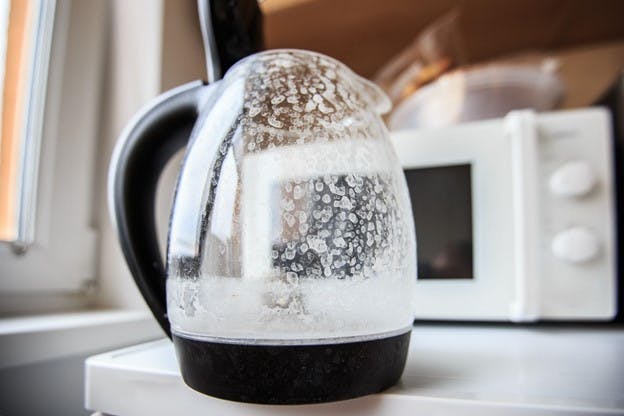🌟 New Arrival! Upgrade Your Water with Our Advanced Pitcher Filter. Shop Now
February 2023
The Important Facts About Chicago Water Quality
There’s no place quite like the Windy City. Chicago brought the world its first skyscraper, the Atomic Age, the first gay rights group, house music, brownies, and Michael Jordan. The Second City’s contributions to sports, entertainment, technology, and culture over the last 100 or so years can’t be understated. Not bad for a city that almost completely burned down 150 years ago.
The city of Chicago is now home to over 2.7 million people, making it the third largest city by population in the U.S. With so many residents to deliver water to, keeping high standards for Chicago water quality is of the utmost importance.
This guide on Chicago’s water quality will help you understand where your water comes from, what’s in it, and whether it’s safe to drink.
Where Does Chicago’s Drinking Water Come From?
Lake Michigan is the only one of the Great Lakes that’s fully within U.S. borders. It accounts for 4% of all the fresh, unfrozen surface water on the planet and that makes it a perfect source for Chicago’s water supply.
Managed by the Chicago Department of Water Management (DWM), each day over 1 billion gallons of water are sent to Chicagoans’ faucets. Meanwhile, over 1.3 billion gallons of wastewater from drains and runoff are treated.
Is Chicago Water Quality Good?
Lake Michigan is an incredible natural resource but its status as a surface water feature makes it susceptible to contamination, according to the Illinois EPA.
The DWM combats this contamination by placing its water intake systems far offshore and transferring the water to treatment plants through miles of tunnels bored into the granite beneath the lake. They also test the water over 600,000 times per year to ensure quality.
According to the 2021 Chicago Water Quality Report, DWM was issued two violations by the EPA. Both were reporting issues that didn’t affect water quality.
The city also tests for many contaminants that are known to be harmful but don’t yet have federal guidelines, like PFAS and chromium-6.
This doesn’t mean there aren’t problems though.
Is It Safe to Drink Tap Water in Chicago?
While Chicago tap water hasn’t run afoul of U.S. EPA standards for safe drinking water, the Environmental Working Group (EWG) has pointed out a few issues when it comes to Chicago water quality.
The EWG is a D.C.-based nonprofit that monitors U.S. drinking water and compares it to the latest scientific research. Since EPA recommendations haven’t been updated in almost 20 years, EWG recommendations are often more stringent than those of the federal government.
When comparing Chicago’s water quality to EWG recommendations, we run into 13 potential issues. Let’s look at a few of them now.
What Chemicals Are in Chicago Drinking Water?
Like most cities with modern water treatment standards, Chicago uses chlorine to kill harmful pathogens that could cause acute illness. Disinfection byproducts (DBPs) are formed when chlorine and other disinfectants interact with organic matter in water.
Unfortunately, the disinfection byproducts become carcinogens when exposure to them is sustained at high levels. Here are some of the DBPs affecting Chicago water quality, according to the EWG. These are all measured in parts per billion (ppb):
HAA5
There are five haloacetic acids that make up HAA5, including: monochloroacetic acid, dichloroacetic acid, trichloroacetic acid, monobromoacetic acid, and dibromoacetic acid. Long-term exposure to HAA5 can lead to cancer.
Levels of HAA5 in Chicago water have exceeded what the EWG recommends for safety by 103x.
- EPA maximum allowance: 60 parts per billion (ppb)
- EWG recommended maximum: 0.1 ppb
- Chicago maximum detected level: 10.3 ppb
HAA9
HAA9 includes all of the contaminants from HAA5 but adds bromochloroacetic acid, bromodichloroacetic acid, chlorodibromoacetic acid, and tribromoacetic acid. These are also cancer causing.
Levels of HAA9 in Chicago water have been recorded at 319x higher than the EWG recommends for safety.
- EPA maximum allowance: No legal limit
- EWG recommended maximum: 0.06 ppb
- Chicago maximum detected level: 19.1 ppb
Total Trihalomethanes (TTHMs)
TTHMs are formed when chlorine interacts with organic compounds in drinking water. They’re also known to be carcinogenic. This category is made up of four chemicals: chloroform, bromodichloromethane, dibromochloromethane, and bromoform.
Levels of TTHMs in Chicago water have been 141x higher than the EWG recommendation for safety.
- EPA maximum allowance: 80 ppb
- EWG recommended maximum: 0.15 ppb
- Chicago maximum detected level: 21.1 ppb
What Other Contaminants Are Found in Chicago Water?
Beyond disinfection byproducts, Chicago water quality is diminished by a few other contaminants you should also be aware of.
Chromium (Hexavalent)
Chromium is a common contaminant found in U.S. water supplies. It can occur naturally but is also an industrial pollutant. Although it’s known to be a carcinogen, this contaminant is still unregulated by the EPA.
Chromium levels in Chicago water have exceeded what the EWG recommends for safety by 9.7x.
- EPA maximum allowance: No legal limit
- EWG recommended maximum: 0.02 ppb
- Chicago maximum detected level: 0.194 ppb
Radium, Combined (-226 & -228)
Radium — a radioactive material — is measured in picoCuries per liter or pCi/L. A Curie is a measure of the intensity of a radioactive substance, found by measuring its decay. A picoCurie is one-trillionth of a Curie.
Radium can occur naturally in groundwater but is often a byproduct of the oil and gas industry. According to the CDC, in high concentrations over time it’s known to cause anemia, cataracts, fractured teeth, bone cancer, and even death.
Levels of radium in Chicago water have been found at 13x higher than what the EWG recommends for safety.
- EPA maximum allowance: 5 pCi/L
- EWG recommended maximum: 0.05 pCi/L
- Chicago maximum detected level: 0.67 pCi/L
Finally, we want to talk about lead. Because lead concentrations can vary from one single family home to the next, it makes sense to discuss lead in a different format.
Is There Lead in Chicago Tap Water?
Lead is a neurotoxin that affects brain development in children and is also particularly dangerous to pregnant women. According to the EPA and CDC, there is no safe level of lead exposure for children.
In the 1990s, 25% of children in the Chicago area were found to have elevated levels of lead in their blood, but through various public health initiatives this has been lowered dramatically.
Today, the city goes through great lengths to make sure the water coming from their water treatment plants is lead-free. However, once it gets to your house, it’s no longer in the city’s control.
While the water mains that transport water throughout the city are owned and maintained by the DWM, the service lines under your house and yard are property of the homeowner. And many of those home service lines are made of lead.
In fact, Chicago has more lead-based home service lines than any other city in the U.S. because their use was mandated by the city before a 1986 federal ban went into effect. So, if your house was built prior to 1986, there’s a good chance the pipes that supply your house are made of lead.
Recent installations of water meters throughout the city have increased this lead problem.
How Water Meter Installations Have Increased Lead Exposure
Chicago’s water billing has traditionally happened based on a flat usage fee. In the last decade, the city began encouraging the installation of water meters in private residences that would bill by the gallon instead. This was intended to decrease water usage.
A 2013 study by the U.S. Environmental Protection Agency (EPA) showed these meter installations often caused increased levels of lead in drinking water due to water system disturbances, but Chicago went ahead with it anyway.
In 2019, after 13 months of reports of elevated lead in customer water supplies, these water meter installations were finally halted. At the time, 22% of houses with the new meters showed increased levels of lead and 7.1% of those had levels above the legal limits.
In 2022, installations were restarted after they determined the issue to be that lead pipes were being cut to install the new meters. Going forward the city recommends that in order to decrease the amount of lead in your tap water, Chicago residents should:
- Run water for at least five minutes any time your tap has been unused for six hours or more, if you intend to cook with or drink the water.
- Draw only cold water from the tap if you intend to cook with or drink the water.
- Remove and clean your aeration filters monthly.
- Replace faucets made before 2014.
- Replace lead service lines.
- Use a water filter that is NSF-certified to remove lead.
Under the conditions that you a) install a water meter, b) get your water tested by DWM, and c) have test results that show up above 15 ppb, you could be eligible for a free water pitcher filter with six cartridges to ensure you have some access to safe drinking water.
How to Get Your Lead Service Lines Replaced
The good news is the city has made it a priority to help Chicago residents lower levels of lead in their water by enacting various programs you may want to consider taking advantage of.
The programs include free water testing for anyone with a water meter installed. This testing can be done by a DWM professional, or by the homeowner sending in water samples collected using a free lead test kit.
They also have programs to fully replace your home’s service lines for free if you qualify as low income or to waive permit fees up to $3,100 if you choose to do it yourself.
Don’t expect quick service though. As of April 2022 — 19 months after Mayor Lightfoot declared action was long past due — only 74 water supply lines out of an expected 400,000 had been replaced.
Is Chicago Water Hard or Soft?
Like in most of the United States, Chicago water is considered to be hard. It has a measurement of 7.6 to 8.8 grains per gallon. Water hardness refers to the concentration of mineral solids like calcium and magnesium contained in the water. As groundwater passes over rocks and soil, the minerals are dissolved and picked up.
These mineral solids aren’t harmful to human health but they can wreak havoc on our plumbing and water-using appliances. Hard water can also increase soap scum buildup and cause bad hair days.
HomeWater has a variety of products to treat hard water so you can finally rid yourself of those crusty faucets. Check out our salt-free and traditional water softeners for more information.
Is Chicago Water Fluoridated?
Like many U.S. cities, Chicago does fluoridate its water as a public health initiative. Fluoride is well known to help with cavity prevention.
If you’d like to filter out fluoride from your Chicago water, consider our HomeWater 4-Stage Reverse Osmosis Under Counter Water Filter.
How Can You Get the Best Quality Water to Your Chicago Home?
With almost 3 million people relying on water from this one system, Chicago water quality is very important.
If you want high-quality, great-tasting water flowing through your taps, HomeWater filtration systems can help. Our filters can reduce lead, rust, and other contaminants in your water, so you feel confident that every sip will leave you healthy and hydrated.
If you live in an apartment or condo, an under-counter water filter is a stress-free solution. You can have these filters installed in 15 minutes, without altering your plumbing.
If you’re a homeowner looking to improve the water quality of your entire house, consider our HomeWater 4-Stage Whole Home Filter with a salt-free water softener add-on to filter and treat your water before it enters your pipes.
Whether you’re concerned about contaminants or you need water that’s gentler on your skin, hair, and appliances, you can find the best filter system for your needs at HomeWater.
Related Articles
January 2023
Your Guide to New York City Water Quality
December 2022
Your Total Guide to Houston Water Quality
November 2022



